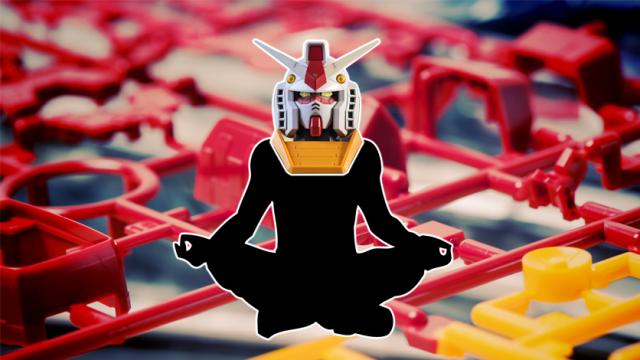I don’t really enjoy vegging out on the couch. I am paradoxically curious about everything, but quickly get bored when my brain isn’t engaged. I always need to be doing something. So, instead of staring at yet another screen when I come home, I’ve finally found a perfect balance of engaging and relaxing for my evenings.
Photos by NorGal (1), NorGal (2), kotss (Shutterstock).
Sure, I could spend the evening surfing the internet, reading and blogging, but that’s too much like work — and besides, I need to get away from screens. So, in an effort to find a new hobby, I recently bought a complex, high quality model of a robot and leisurely assembled it. I spent the whole day, more or less, carefully following the Japanese directions with their wonderfully exacting diagrams, to piece together the little mecha-warrior.
It’s a Gundam, to be specific, a giant space robot from a long-running Japanese animated series. I’ve never even seen an episode of the show, but I needed something to wrap my head around that had nothing to do with work and I wanted to get my hands dirty. Plus Gundams look cool.
It was an unexpectedly refreshing day. My hands were callused and nicked from cutting hundreds of tiny components off their plastic scaffolding, using an Exacto knife that became duller and more dangerous as I used it. My eyes were tired from pouring over the intricate diagrams while straining to remember a little Japanese from school. It was tedious, and yet somehow relaxing as I invested my time and energy into something far and removed from my day to day life. I’m starting to understand why people make intricate model railroads in their basements.
It’s not just me, of course, directing energy into side-projects for the purpose of recharging. Speaking with Entrepreneur.com, neuroscientist Jeff Stibel says that getting away from your usual problems can help you utilise the inherent multi-tasking nature of the brain:
“The way you’re recharging is stopping a particular problem and doing something very different,” he says. While the brain can only handle so much of one task before it starts to shut down, Stibel says it can handle a lot of many different tasks. “When you hit that breaking point and take a break and hit another one, your brain can ramp back up, so you’ll be twice as productive as you would have been otherwise by just doing a single task,” says Stibel.”
This might seem like an elaborate way to say “take a break once in a while,” but there’s a bit more to it than that. Simply getting offline or watching TV didn’t really reinvigorate me because all the problems I was dealing with during the day were still on my mind with something that passive. I needed new, completely different problems to solve to flush out the latent work anxiety. In my case, that meant building a fake robot (you know, as opposed to a real one).
I’m not saying, of course, that everyone should go out and buy an expensive Gundam kit today. But consider what you usually do after work for relaxation: is it active enough to involve your brain, yet removed enough from your work to distance yourself? I build model kits, but you may find your peace running marathons or working on car engines or building elaborate LEGO sculptures of the Death Star.

Comments
One response to “Zen And The Art Of Gundam Maintenance: Why You Need A Post-Work Hobby”
Great article! I recently discovered the similar effect myself… I feel more energized after a weekend if I spent it on something constructive and/or by learning something new, like painting “art” on canvas, learning a new song on guitar, constructing something in Sketchup, etc.